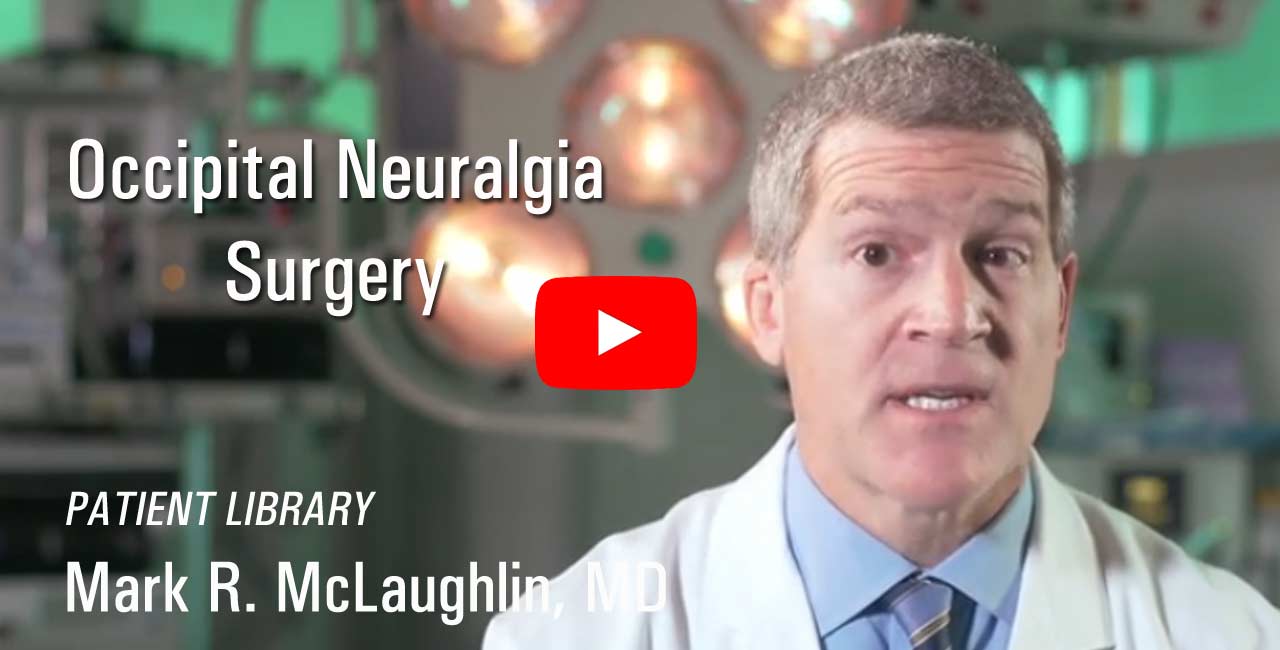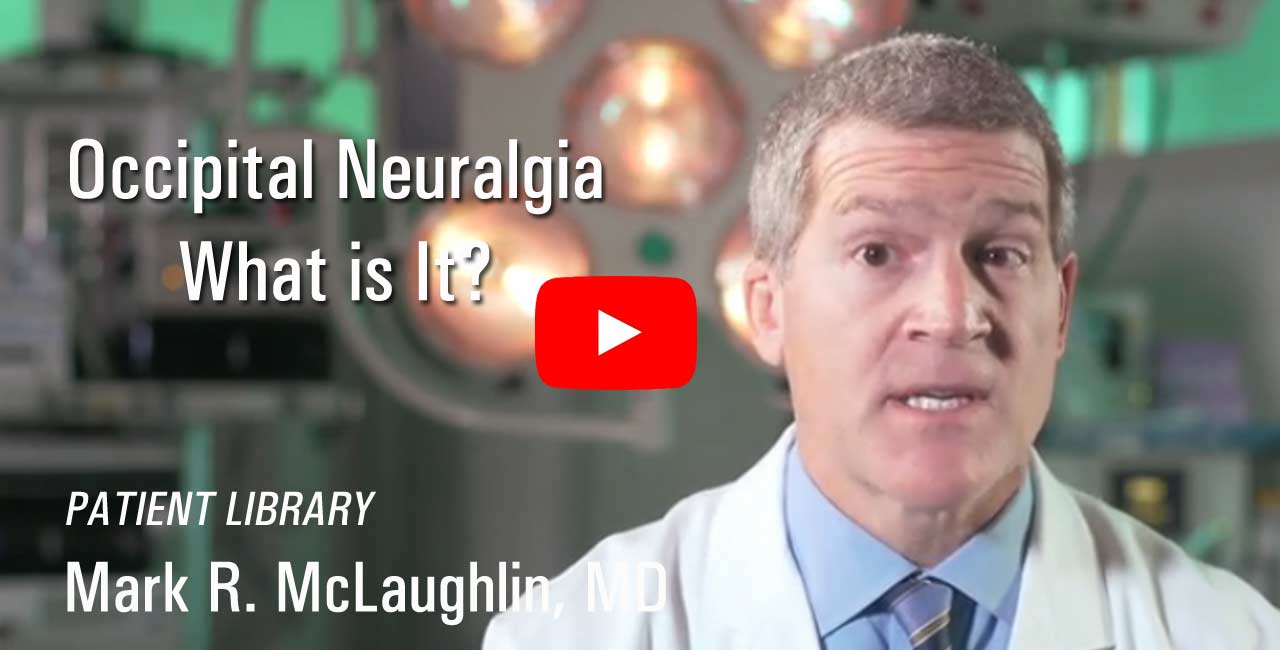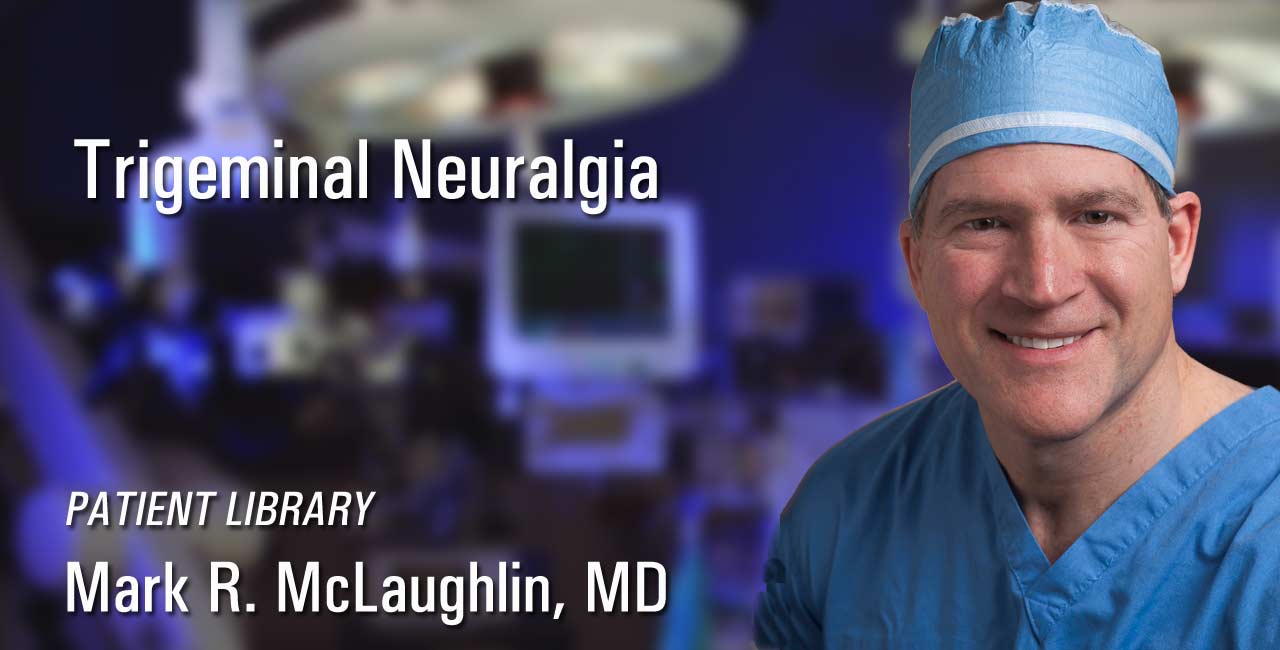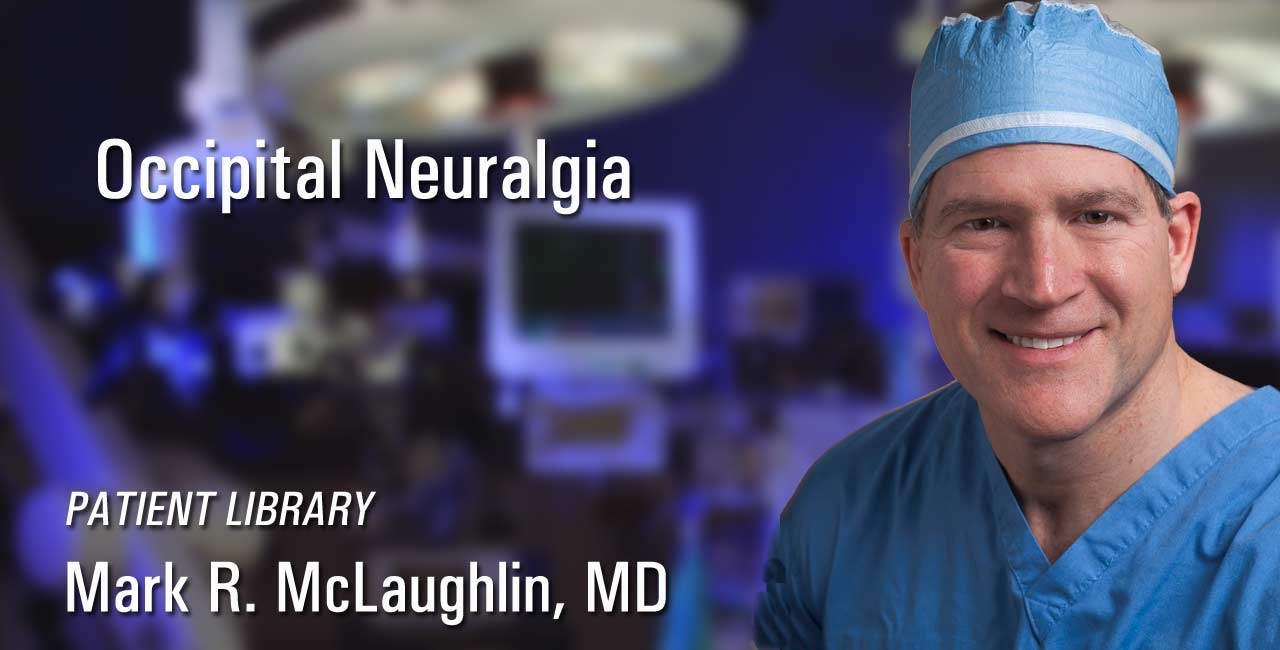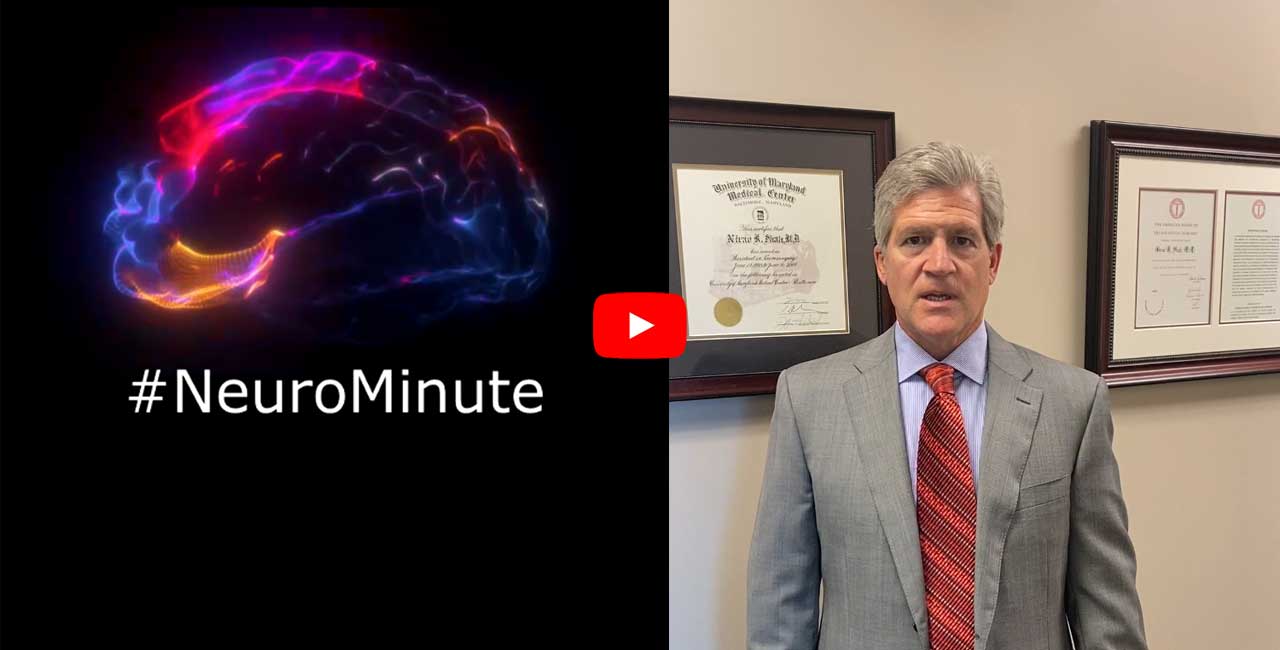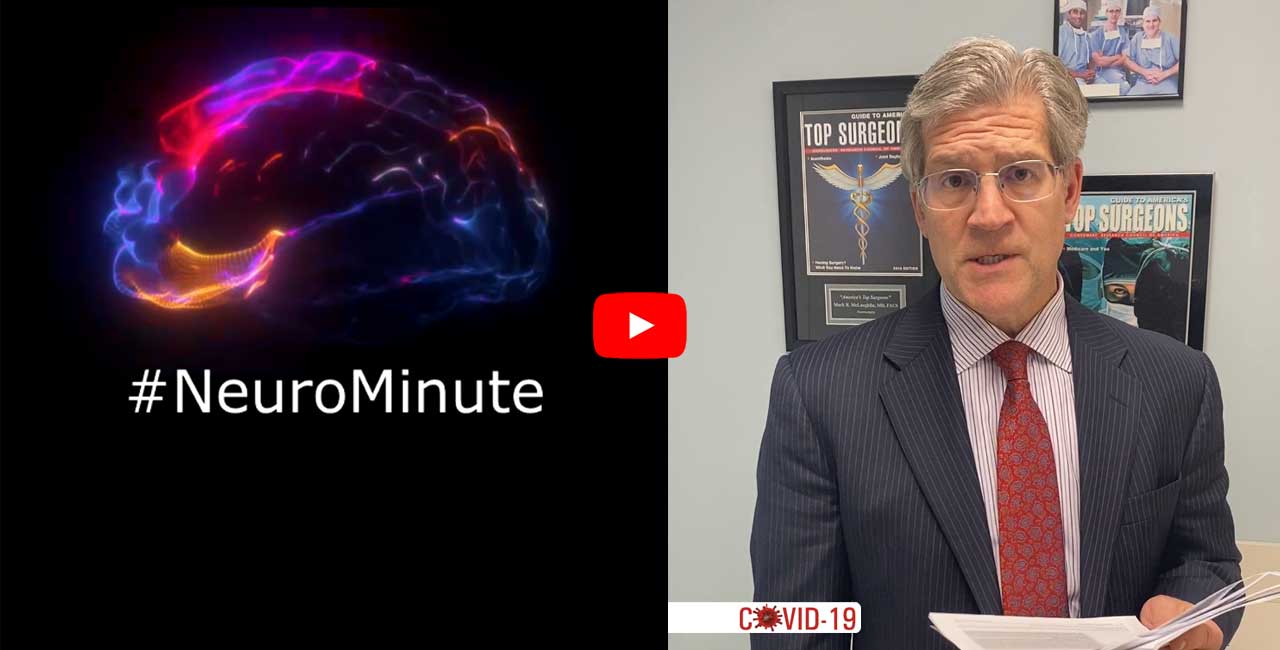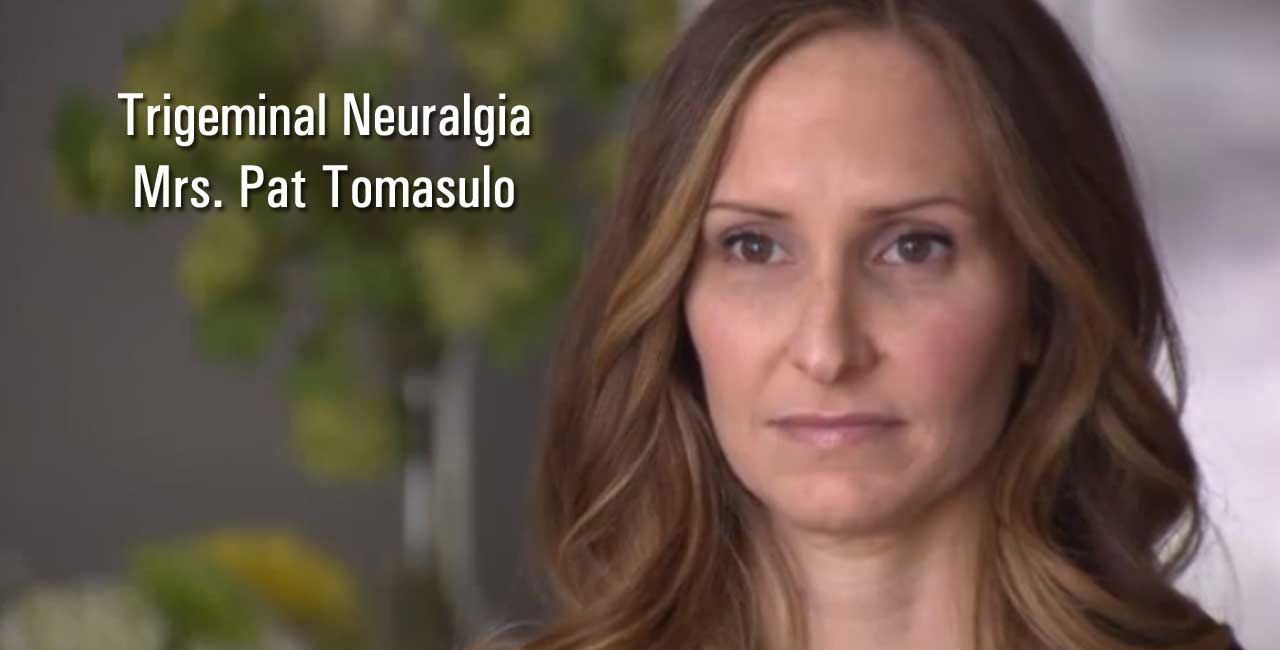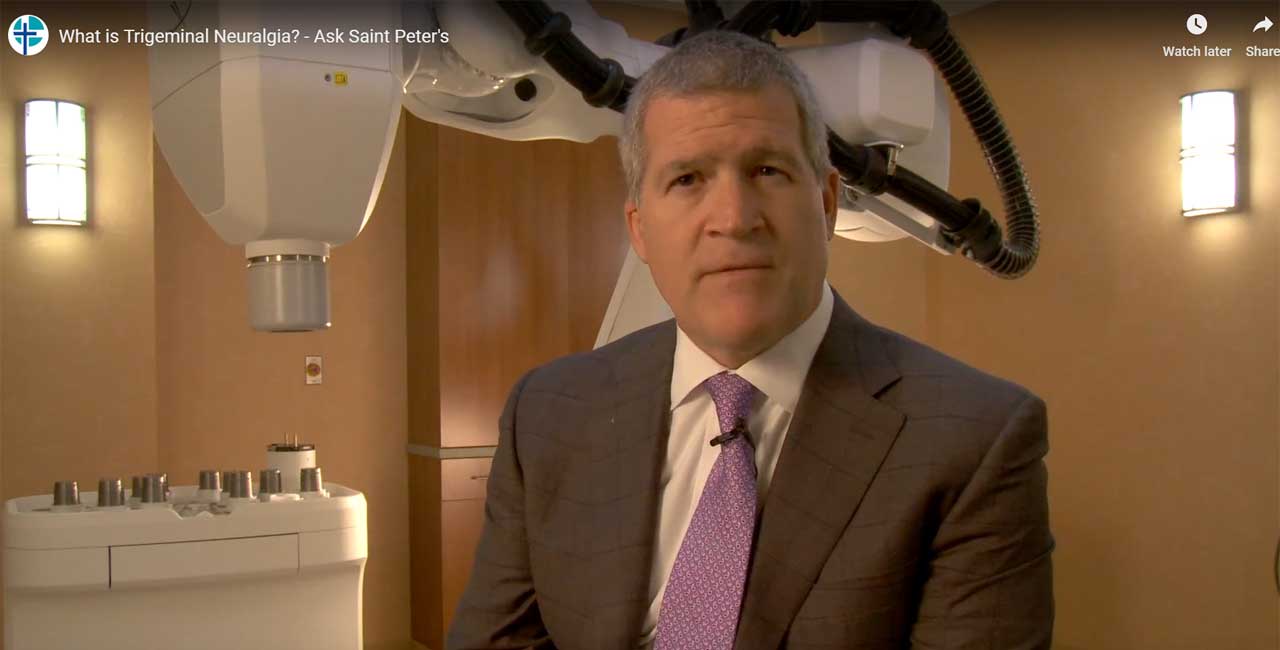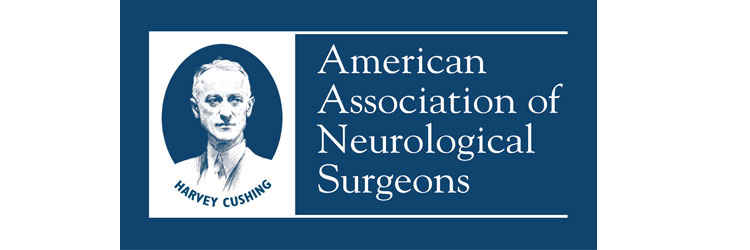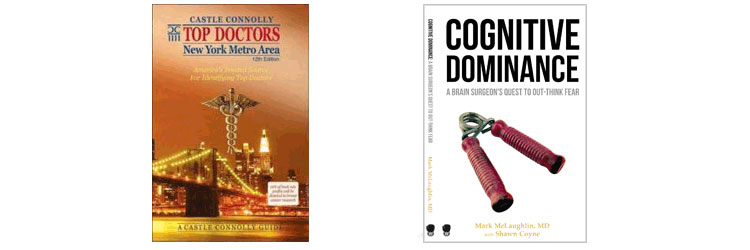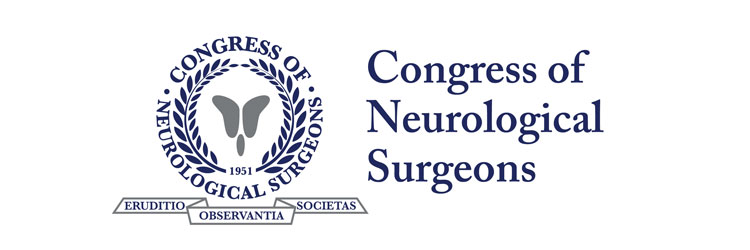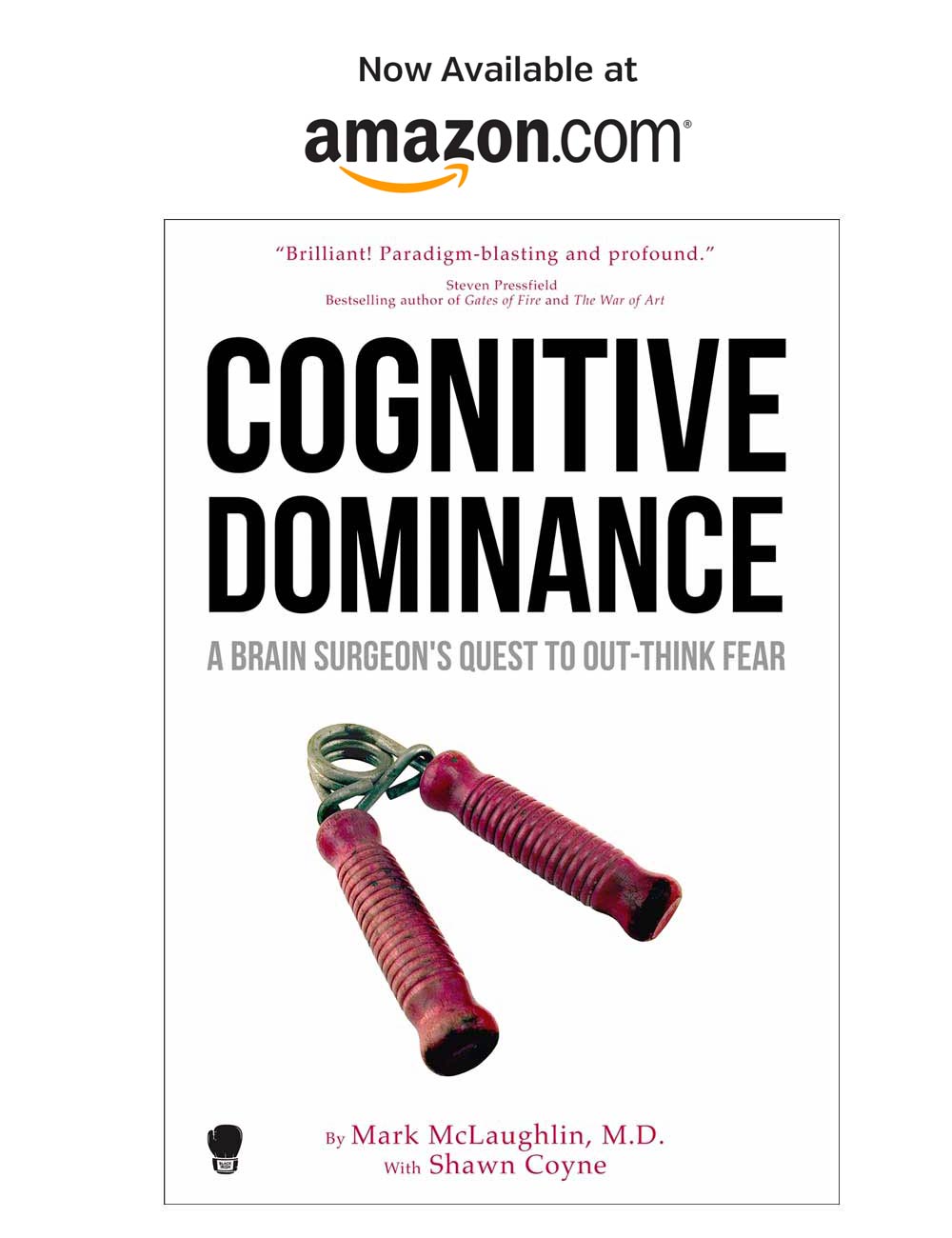Trigeminal Neuralgia : The Interview
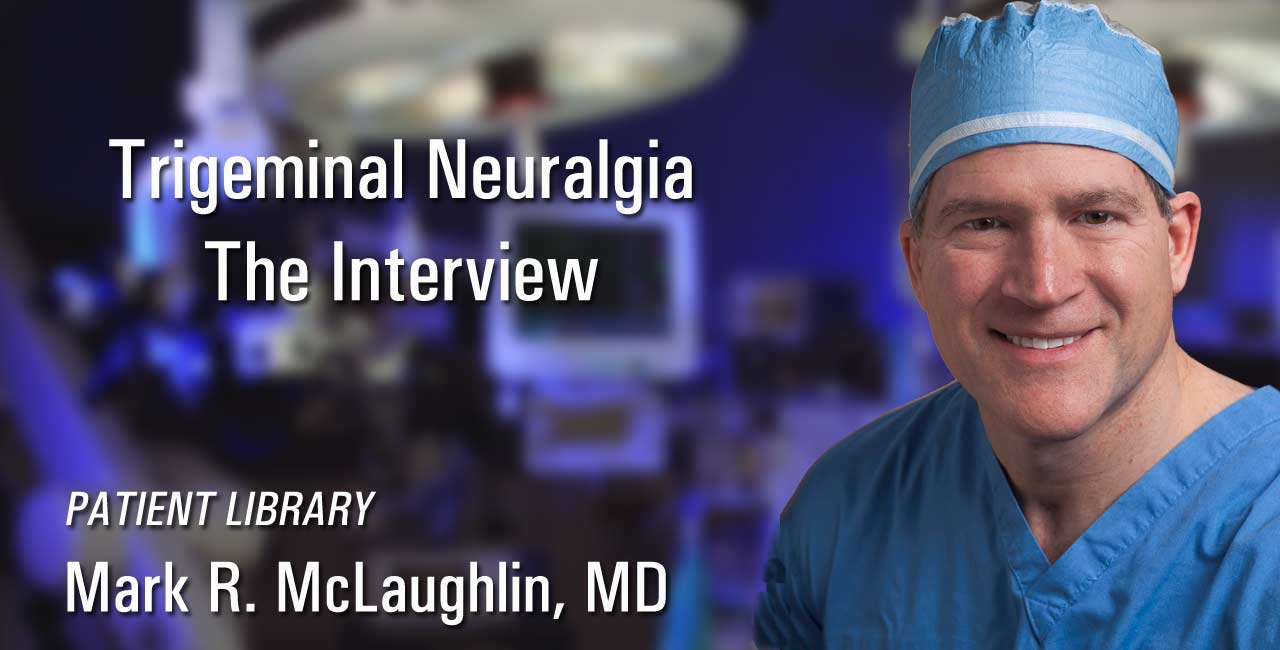
Interview with Mark McLaughlin MD
Dale: As the Medical Director of Princeton Brain and Spine*, and a neurosurgeon with a focus on spine disorders and Trigeminal Neuralgia, can you tell us a little about these two areas of specialty?
Dr. McLaughlin: Sure. First of all Trigeminal Neuralgia is a fascinating disease that has a very interesting history to it, and although it affects a small population of patients it severely debilitates them, so it’s a wonderful area for me. I get a lot of gratification taking care of patients with Trigeminal Neuralgia because you can really make a huge impact in their life.
Dale: Okay great. Can you tell us what exactly Trigeminal Neuralgia is and what are the causes of it?
Dr. McLaughlin: Yes, Trigeminal Neuralgia, also known as “tic douloureux”, is a sharp stabbing, and lancinating pain that goes into the face. Some people describe it as a hot poker being stuck up their nose, some people describe it as a lightning bolt, and some people describe it as the worst pain in their life. It’s so severe there are actually people that have committed suicide over it and often times it is diagnosed late in its course because it’s not picked up appropriately by health care professionals.
It is excruciating, it’s intermittent, and people will never know if it is going to come or go. It’s typically got triggers, like if you touch the face in a certain area, or if you drink a hot or cold liquid, or sometimes the wind just blowing on the persons face will trigger it.
It is typically caused by blood vessel that pinches the nerve at the brain stem. And much like a herniated disk causes sciatica, a pinched nerve at the base of the brain in the region of the Trigeminal Nerve causes severe lancinating, referred, facial pain. Sometimes people with Multiple Sclerosis can have it, but it is most commonly caused by a blood vessel compressing the nerve at the brain stem.
If it is diagnosed properly it can be very well treated with medication and if the pain is refractory to the medication it can be treated with surgery and the surgical success rates are very good. I manage a lot of patients with Trigeminal Neuralgia. I try to get them better with conservative treatments such as medications. But sometimes, as they do not improve, we move to surgical treatments, and we have several treatments in our armoreterium that can get these patients relief.
Dale: Trigeminal Neuralgia seems to be pretty sensitive, meaning an attack can be brought on by day-to-day activities, like you mentioned, even just the wind blowing on your face. Do you have advice for those who suffer from Trigeminal Neuralgia on how to cope with these attacks on a daily basis?
Dr. McLaughlin: Well, there is a fantastic book called Striking Back. I would highly recommend anybody with Trigeminal Neuralgia read it. It gives patients many resources on how to deal with this. It also gives support groups which can be local or national, or even international because if you can just get a chance to talk to somebody that has this, sometimes that can give you some comfort. In addition, obviously always trying to maintain your blood pressure, trying to remain healthy, trying to remain hydrated, trying to minimize stress in your life - those are the kind of things that can decrease your chances for an attack.
But if an attack comes on you know it can be triggered by anything. Interestingly, sometimes like deep pressure to the skin, like if you push down hard, won’t elicit the pain at all. But a slight brushing of the face will cause it.
Dale: Interesting. So does Trigeminal Neuralgia tend to affect a certain age group or sex? And if so is there any reason for this?
Dr. McLaughlin: Yes. Trigeminal Neuralgia is about 1 in 10,000 in a population. It is slightly more prevalent in women. And typically in the 40/50/60 age bracket.
Dale: And what are the treatment options for the disease?
Dr. McLaughlin: Well as I said earlier, we try very hard to manage people with medication first. And there are some excellent medications. Typically they’re anti-seizure medicines. That is because it is presumed that this type of facial pain syndrome is like a seizure of the sensory nerve, of the trigeminal nerve goes to the face. So the best drug, the most successful drug is something called Tegretol carbamazepine.
This drug works by stabilizing the membranes of the nerves and it can decrease the attacks. Giving this drug is also helpful from a diagnostic standpoint because if people respond to the Tegretol that is almost pathognomonic as a diagnosis that a person does have Trigeminal Neuralgia. So we use it for both for diagnostic purposes and therapeutic purposes.
There are some other medications, typically Neurontin or Gabapentin, that can be used. That is another medicine that works quite well. So we always try first to manage people with medications. The problem is some people are allergic to medications, or some people can’t tolerate the side effects of the medications, which include drowsiness, trouble concentrating and those sorts of things. So if someone is allergic to the medicine or can’t tolerate the side effects, we have to explore other options. There are two choices - either a restorative procedure or a destructive procedure.
With the restorative procedure, you have three options. First option is a minimally invasive procedure called the “rhizotomy” where a needle can be placed through the cheek into the origin of the Trigeminal nerve bundle called the trigeminal ganglion. That is a procedure where you place a needle in that area, then we inflate a balloon which causes a little pressure on the nerve and it relaxes the firing of the nerve. That is called the Balloon Rhizotomy.
The second things you can do are other types of rhizotomieswith alcohol or heat to sort of burn the nerve a little bit. Now these things work quite well, but they generally trade the pain for numbness. So you lose the pain but you get a little bit of numbness in that nerve. You’re going to have numbness to your face. That’s the tradeoff.
The second way to go is to try a procedure called gamma knife radiosurgery. That is a highly focused beam of radiation that is directed right to the nerve and it basically causes a mild disruption of the nerve to diminish the pain. Both of those are minimally invasive techniques. But in my opinion they’re destructive techniques because like I said, they generally trade the pain for numbness.
In my opinion, the best treatments for this, if the medications are not working, is something called the microvascular decompression. Instead of damaging the nerve in any way shape or form you’re moving that blood vessel that’s causing the pain away from the nerve. You’re taking the pressure off of the nerve and you’re putting a little pad between the vessel and the nerve to relieve the origin of the pain. So you’re basically taking care of the cause. The down side is that it requires a general anesthesia.
It is the procedure of choice after you have failed medications. That procedure is an operation that we do at Princeton Brain and Spine Care. It consists of making an incision behind the ear making a small window hole about the size of a fifty-cent piece and going down along the side of the skull between the brain and the skull. We don’t go through the brain tissue. We go along the side of it and then we get down to the nerve. Then we move the blood vessel off of the nerve.
Once we get down to the nerve we find what looks like a little jug handle blood vessel that’s pushing into the nerve and we mobilize it under a microscope, under microscopic dissection. We mobilize it and we flip it out away from the nerve. We put a little piece of padding between the vessel and the nerve. It looks like a little wisp of cotton. It keeps the blood vessel away from the nerve and then we close the incision back up, the procedure is done. It takes about an hour and a half to two hours in the operating room. It requires a two to three day hospitalization and it has the longest success rate for treating the pain and the highest effectiveness in getting people off medicine and pain free.
Dale: So now a little bit about you, Dr. McLaughlin. What exactly made you specialize in Trigeminal Neuralgia?
Dr. McLaughlin: Well, I trained in the University at Pittsburgh, under the Dr. Peter Jannetta. Dr. Peter Jannetta is one of the top neurosurgeons in the world, and one of the fathers of neurosurgery. He is a pioneer in Trigeminal Neuralgia. He conceived this treatment, micro-bash decompression, and proved its effectiveness in the course of his career. He is generally considered the father of the treatment of this disease.
Well, as a neurosurgeon, a large portion of what I do is spine surgery. And learning this early on in my career I felt that spine surgery was the majority of most neurosurgeons do. I thought that there would be significant value in doing a fellowship to get added experience. So, I chose one of the top fellowships in the country under the guidance of Dr. Regis Haid and Dr. Gerald Rodts at Emory University.
I spent a year refining my surgical skills and learning as much as I could about spine disease after I completed my residency. I’ve been very happy that I did this because I think it adds another layer of expertise in managing patients with spine disease. The key thing about spine disease, similar to trigeminal neuralgia, is that we still always try to get people get better without surgery. Conservative measures generally are going to be best option for most patients with spine disease. But if you have in your toolbox conservative treatment, as well as medication, as well as minimally invasive techniques, and open techniques, then I think you are offering patients the full gambit of options for their care. I think that is very important and that is what we do at Princeton Brain and Spine Center.
We treat low back pain conservatively. We treat low back pain with minimally invasive techniques. We treat low back pain with conservative therapies, and we can also treat lower back pain with surgery. That is a very important thing when you are a patient coming to see a doctor. You want to see a doctor that has a full repertoire of treatments to offer you.
Dale: And do you see any advances in treatment for the disease on the horizon?
Dr. McLaughlin: We are trying to refine our surgical techniques. There are endoscopic adjunct treatments that are promising and there are always new medications that are promising. There are always better ways to improve your surgical skills. Now having said that, you really have to move the blood vessel off of the nerve at the brain stem for it to work. You are still going to physically, mechanically mobilize that blood vessel.
* Dr. Nirav Shah became only the 2nd Medical Director of PBS on April 1, 2015. Dr. McLaughlin continues to lead the Vascular Decompression team at PBS, and to undertake special projects for the practice.
Princeton Brain & Spine Care surgeon Mark McLaughlin, M.D. trained with Peter Jannetta, M.D., the "father" of modern microvascular decompression surgery for trigeminal neuralgia, hemifacial spasm, glossopharyngeal neuralgia, and other cranial nerve rhizopathies. Dr. McLaughlin worked closely with Dr. Jannetta in the ongoing research, and was the lead author of the paper "Microvascular decompression of cranial nerves: lessons learned after 4400 operations" published in the Journal of Neurosurgery in January 1999. On PUBMED
Neuralgia Information for Patients - Expert Princeton Neurosurgeon
Surgery for Occipital Neuralgia
Surgical treatment for occipital neuralgia is sometimes required. In this video, Dr. McLaughlin explains the key points that will be considered before surgery is recommended.
What is Occipital Neuralgia?
Occipital neuralgia is a distinct type of headache characterized by piercing, throbbing, or electric-shock-like chronic pain in the upper neck, back of the head, and behind the ears, usually on one side of the head.
Trigeminal Neuralgia | Tic Douloureux
Trigeminal neuralgia (also called Tic Douloureux) is a chronic pain condition characterized by recurring episodes of extreme, sporadic, sudden burning or electric shock-like face pain.
Glossopharyngeal Neuralgia
Glossopharyngeal neuralgia is a condition characterized by recurring episodes of severe pain in the tongue, throat, ear, and area near the tonsils. An overview from Dr. McLaughlin.
Occipital Neuralgia
Occipital Neuralgia (ON) is a common disease that is often often misunderstood or not diagnosed by many physicians. Princeton New Jersey neurosurgeon Mark R. McLaughlin, MD explains.
Trigeminal Neuralgia in a Time of COVID-19
Video: Stress may result in increased perception of facial pain from Trigeminal Neuralgia. Dr. McLaughlin offers some thoughts on dealing with TN during the coronavirus crisis. April 2020
Trigeminal Neuralgia: COVID19 - Video Update
September 2021: Video update with Mark R. McLaughlin, MD. What you need to know about COVID19 and Trigeminal Neuralgia.
Trigeminal Neuralgia with COVID-19 Virus
Video January 2022 : Dr. McLaughlin highlights the current literature as it relates to Trigeminal Neuralgia and the Covid Virus. What have we learned?
Trigeminal Neuralgia : Covid-19 Vaccination
A January 2022 review of medical literature related to COVID-19 vaccination, Trigeminal Neuralgia, and Neurological Complications. What does the medical literature tell us?
WGN TV Video About Trigeminal Neuralgia
The wife of WGN Sports Anchor Pat Tomasulo suffers from Trigeminal Neuralgia. An informative video.
Trigeminal Neuralgia : The Interview
Dr. McLaughlin was interviewed about Trigeminal Neuralgia and his experience as a top Neuralgia specialist in New Jersey.
Saint Peter's Healthcare Video: Trigeminal Neuralgia
One of my great passions is the treatment of Trigeminal Neuralgia. It is a traumatizing and painful condition. This video was prepared for Saint Peters Healthcare. In it, I answer some common questions about TN.
